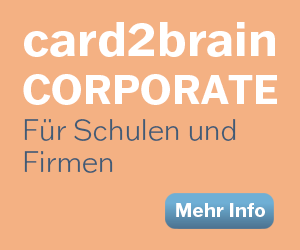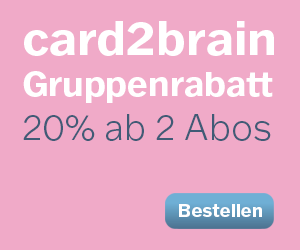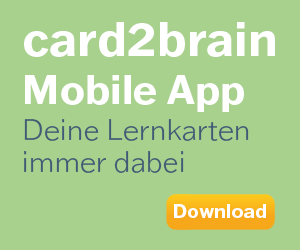Important Key Terms Organizational Behavior
Important Key Terms Organizational Behavior, FHNW 2020
Important Key Terms Organizational Behavior, FHNW 2020
Kartei Details
| Karten | 81 |
|---|---|
| Sprache | English |
| Kategorie | Marketing |
| Stufe | Universität |
| Erstellt / Aktualisiert | 19.06.2020 / 29.04.2024 |
| Weblink |
https://card2brain.ch/cards/20200619_important_key_terms_organizational_behavior
|
| Einbinden |
<iframe src="https://card2brain.ch/box/20200619_important_key_terms_organizational_behavior/embed" width="780" height="150" scrolling="no" frameborder="0"></iframe>
|
Evaluative statements or judgements concerning objects, people, or events
Attitudes
Any incompatibility between two or more attitudes or between behavior and attitudes
Cognitive Dissonance
A positive feeling about one’s job resulting from an evaluation of its characteristics
Job Satisfaction
The degree to which a person identifies with a job, actively participates in it, and considers performance important to self-worth
Job Involvement
Employees’ belief in the degree to which they affect their work environment, their competence, the meaningfulness of their job, and their autonomy in their work
Psychological Empowerment
The degree to which an employee identifies with a particular organization and its goals and wishes to maintain membership in the organization
Organizational Commitment
The degree to which people in a country accept that power in institutions and organizations is distributed unequally
Power Distance
An employee’s involvement with, satisfaction with, and enthusiasm for the work he or she does
Employee Engagement
A broad range of feelings that people experience
Affect
Intense, discrete, and short-lived feelings experiences that are often caused by a specific event
Emotions
Feelings that tend to be longer-lived and less intense than emotions and that lack a contextual stimulus
Moods
A situation in which an employee expresses organizationally desired emotions during interpersonal transactions at work (employees act like they have to, e.g. flight attendants are always cheerful)
Emotional Labor
Hiding one’s feelings and forgoing emotional expressions in response to display rules (deals with displayed emotions)
Surface Acting
Trying to modify one’s true feelings based on display rules (deals with felt emotions)
Deep Acting
Inconsistencies between the emotions people feel and the emotions they project
Emotional Dissonance
Reception, attention, and awareness of the present moment, events, and experiences
Mindfulness
The ability to detect and to manage emotional cues and information
Emotional Intelligence (EI)
A process by which individuals organize and interpret their sensory impressions to give meaning to their environment
Perception
The tendency for individuals to attribute their own successes to internal factors and put the blame for failures on external factors
Self-Serving Bias
The tendency to choose to interpret what one sees based on one’s interests, background, experience, and attitudes
Selective Perception
The tendency to draw a positive general impression about an individual based on a single characteristic
Halo Effect
The tendency to draw a negative general impression about an individual based on a single characteristic
Horns Effect
Evaluation of a person’s characteristics that is affected by comparisons with other people recently encountered who rank higher or lower on the same characteristics
Contrast Effect
Judging someone based on one’s perception of the group to which that person belongs
Stereotyping
A situation in which a person inaccurately perceives a second person and the resulting expectations cause the second person to behave in ways consistent with the original perception. (how an individual’s behavior is determined by others’ expectations)
Self-Fulfilling Prophecy (also called Pygmalion Effect)
Choice made from among two or more alternatives
Decision
A discrepancy between the current state of affairs and some desired state
Problem
Characterized by making consistent, value-maximizing choices within specified constraints
Rational
A process of making decisions by constructing simplified models that extract the essential features from problems without capturing all their complexity
Bounded Rationality
An unconscious process created out of distilled experience
Intuitive Decision Making
An ethical perspective in which decisions are made to provide the greatest good for all
Utilitarianism
Individuals who report unethical practices by their employer to outsiders
Whistle-Blowers
A tendency to be overconfident about our abilities and the abilities of others
Overconfidence Bias
A tendency to fixate on initial information, from which one then fails to adjust adequately for subsequent information
Anchoring Bias
The tendency to seek out information that reaffirms past choices and to discount information that contradicts past judgments
Confirmation Bias
The tendency for people to base their judgments on information that is readily available to them
Availability Bias
The tendency to believe falsely, after an outcome of an event is actually known, that one would have accurately predicted that outcome
Hindsight Bias
An increased commitment to a previous decision despite negative information
Escalation of Commitment
The tendency of individuals to believe that they can predict the outcome of random events
Randomness Error
The tendency to prefer a sure gain of a moderate amount over a riskier outcome, even if the riskier outcome might have a higher expected payoff
Risk Aversion














